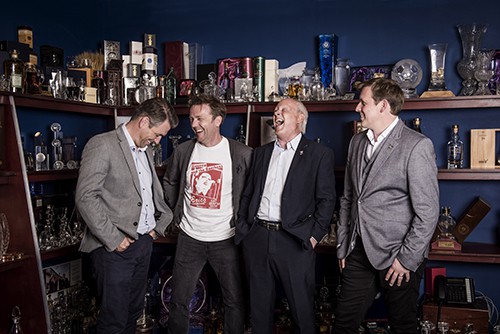Designing a bottle for a premium drinks brand is a prestigious project for any designer. Most of the designers we work with are highly creative, with a keen eye for detail and aesthetics and are experienced in many areas of graphic design including labels and packaging.
However, often, they’ve not actually designed a bottle before and it’s not as straightforward as you might think. So we’ve put together our ‘five big things to consider’ before you start the design.
1. Timescales – Everyone is working to a deadline. The brand will have a date they want to launch, usually to coincide with an event or important retail period and everyone usually works back from that. Our first piece of advice to any designer is speak with the bottle manufacturer before you start the design.
The process of creating a new premium bottle shape from scratch can be lengthy, for example the creation of the mould alone can take anywhere from 2 months to 5 months. Before a mould can be created the initial bottle design needs to be recreated as a 3D image. Thorough analysis of the thicknesses of the base and the neck need done, where the fill-lines will be and just how much crystal or glass will be required to actually make a finished bottle must be accurately calculated before the mould can be finished.
So having an understanding of the timelines involved can really help inform the design process.
2. Pack Size – Everyone wants their new product to stand out on the shelf, but what if it doesn’t fit on the shelf?
Bottles are often accused of looking very similar. It’s a designer’s biggest challenge having to use an ‘off-the-shelf’ bottle and then try to make it look different from the plethora of other products that use the same bottle style. However consider this, one of the reasons ‘off-the-shelf’ bottle designs are popular is because they ‘fit’ at every stage of the process, from manufacturing to the space they take up on the retailers shelf and all the stages in between.
So if you have the opportunity to design a new bottle always consider how big the final bottle will be. For example the product will need to be transported, so how many of these bottles will fit into a case, and then how many will fit onto a pallet? If your bottle is considerably wider than standard then it will take fewer bottles to fill a pallet and you’ve just increased the costs of transportation.
Likewise the retailer only has so much shelf space and that space is at a premium. If your new bottle is wider than others, whilst you might think that gives it an advantage visually it also might lead to fewer bottles being put on the shelf or indeed being ordered by the retailer in the first place as they might have issues storing your bottle. Lastly if your bottle is going into duty free, an important market for most premium spirits, consider if your bottle can be carried onto a plane, will it fit in the overhead locker easily and safely.
3. Weight – What will your product weigh when it’s ready to ship?
First things first, crystal is heavier than glass and premium bottles should always be made from crystal. Will it have an intricate stopper, use metal work or wood, these also add to the weight. Like pack size weight is important for practical reasons such as ease and cost of shipping. It can also be a factor if the product is going into special presentation packaging or a bespoke display is being built for it.
Also, lastly, remember to calculate the weight when the bottle is full!
4. Fill Level – Where is your fill level going to be? In our experience this is the one thing that many designers don’t consider, yet it’s vital to how the finished product looks.
On a standard bottle, when full, the liquid comes up to a level usually above the ‘collar’ in the ‘neck’ but well below the cap, but on a bespoke design that will change. Your design might mean the bottle is oval shaped with a shallow neck, or it might be tall and have a very long neck. In the original designer’s drawing the liquid inside always sits in the neck, just above the collar, but in real life it isn’t that simple.
For a start the shape of the bottle will determine the thickness of crystal or glass required, this in turn will affect the capacity of the bottle. Also, alcohol expands when it gets warm, it has a lower boiling temperature than water, capacity must be left in the bottle to allow for this, the bottle can’t be filled right up to the cap. This is important if the product is going to be sold anywhere warmer than the UK.
We’ve seen designs that don’t consider this, so when the bottle is filled the liquid sits below the neck in the collar, sometimes below the top of the label, and frankly it can look like someone has already taken a drink out of the bottle. Not the first impression you want your premium priced 30 year old single malt to make!
5. Handling – How many people are going to handle your product before it reaches the customer? The answer is lots.
From the bottling plant, transport, perhaps customs, wholesalers, importers, exporters and retailers the bottle might travel thousands of miles so it’s important it looks fantastic when it goes on display. Consider this, crystal, whilst heavier and much more attractive than glass is also softer and easier to scratch particularly at the bottling stage. So we’ve developed a contact film to protect it. Will there be engraving on the bottle, perhaps metal work or even silver? How will that look six months after the bottle is created, will it burnish or become dull?
We spent a long time in R&D developing an adhesive and affixing process to secure metal to crystal so that it will not only hold firmly in place but can be polished too. Standard adhesives struggle to achieve this and six months later the intricate metal work on your premium bottle can come loose.
At Glencairn Crystal we have helped pioneer premium spirit brands and limited edition offerings. Our team have faced the problems above, and many more beside, frequently and we’ve created solutions to all of them. If you are considering creating a premium bottling or have been tasked with designing one then please give us a call. We can help.

